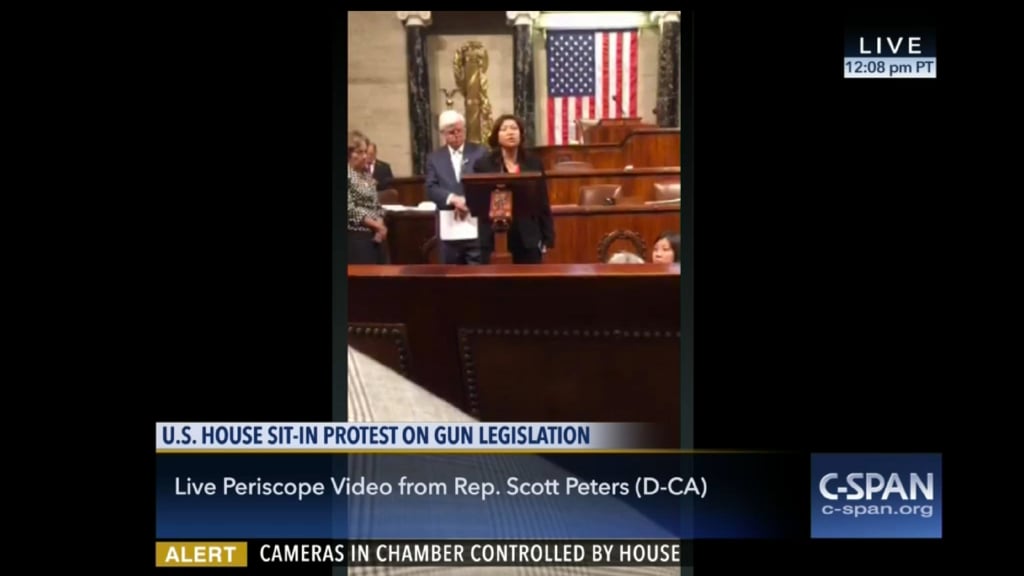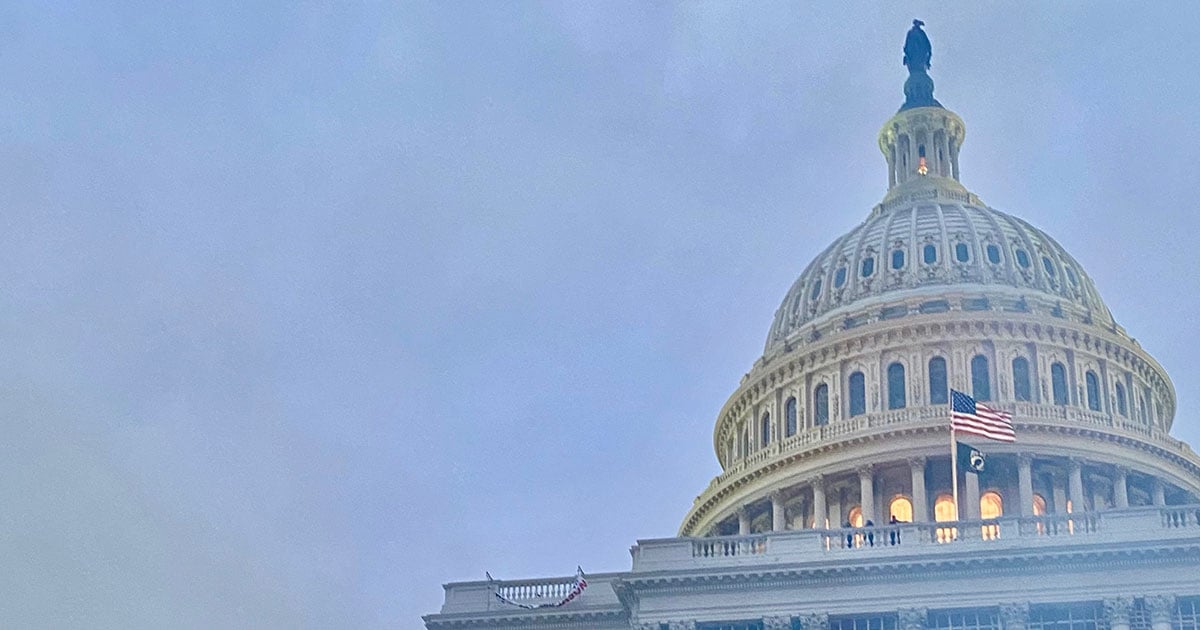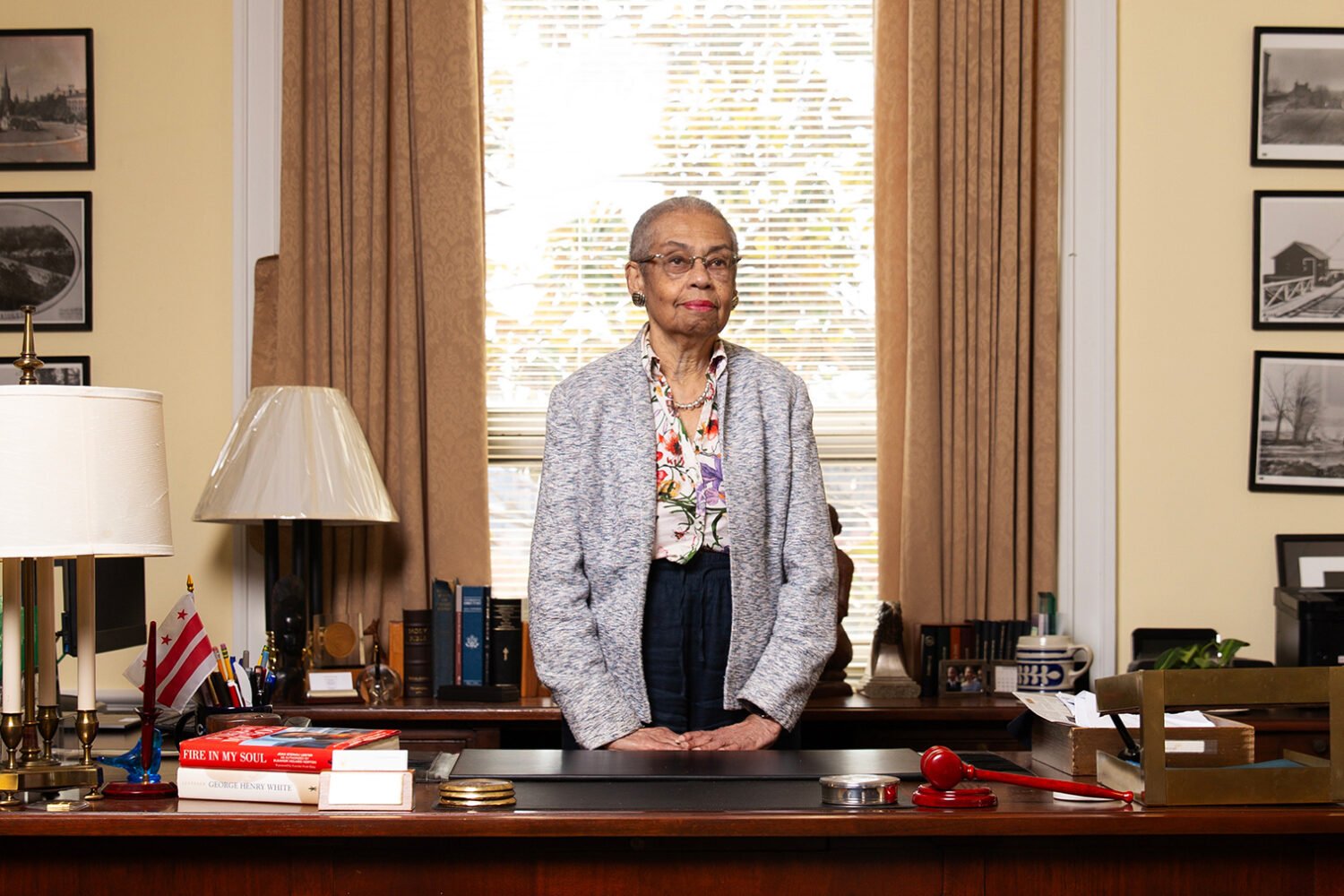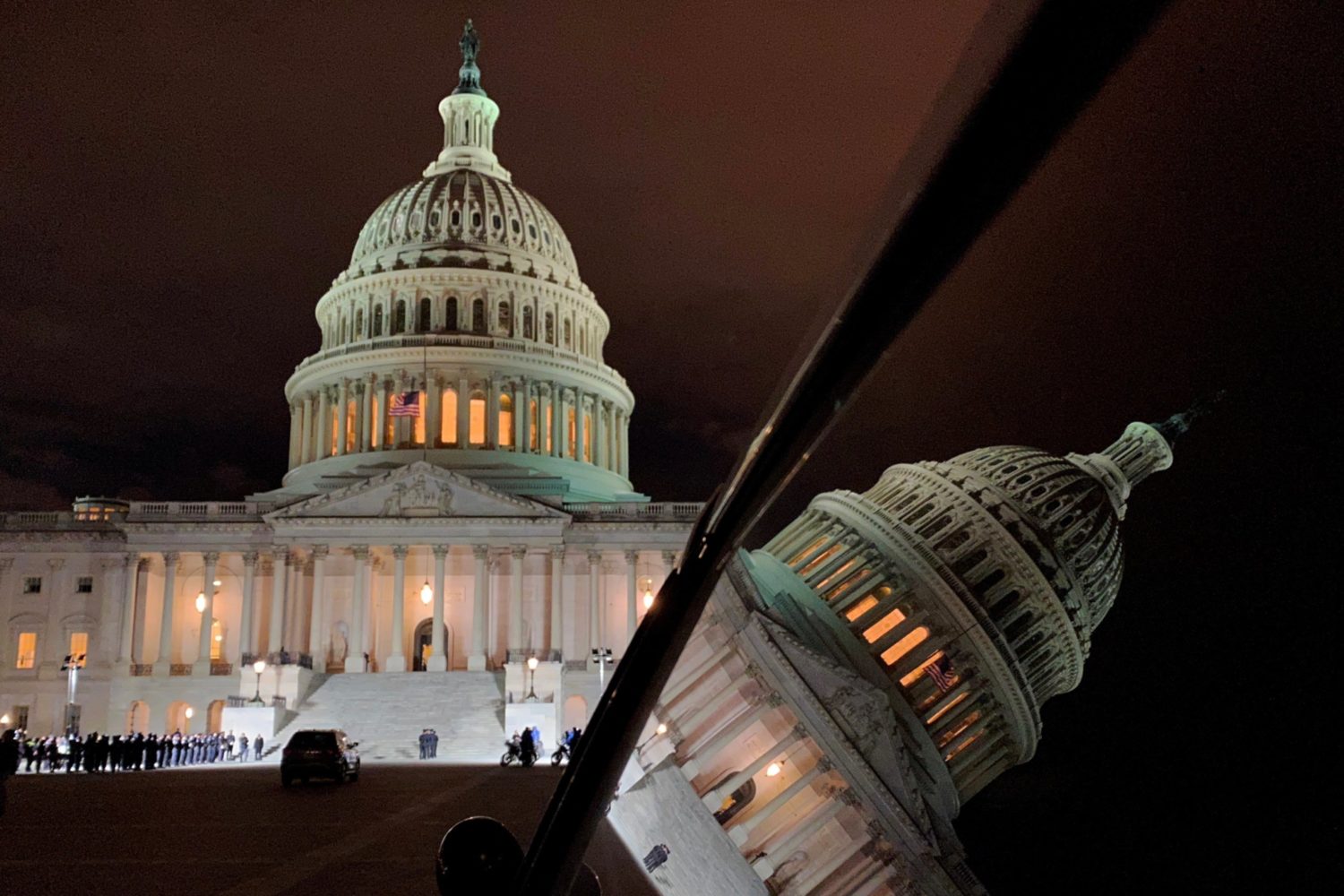Unless they’re familiar with the intricacies of the backstage operations of the House of Representatives, many C-SPAN viewers may not know the broadcaster doesn’t actually own the cameras that record congressional deliberations. The cameras belong to the House, and when it’s out of session, they’re not rolling.
Which is why when a group of House Democrats staged a sit-in on the floor Wednesday over the Republican majority’s refusal to hold a vote on gun-control measures in the wake of the June 12 mass shooting in Orlando, Florida, the protest wasn’t immediately available on TV. Although many reporters in could tweet about the demonstration from the gallery, House rules state that only members are permitted to put photos and videos on social media. With House Speaker Paul Ryan refusing to put the chamber back in session and reporters barred from taking their own visuals, the Democrats’ protest nearly fell into a broadcasting black hole.
So when Representative Scott Peters of California started filming his colleagues’ speeches on Periscope, C-SPAN’s producers put it on the air in place of the usual feed. As of this writing, the network is using a Facebook Live video being shot by Representative Beto O’Rourke of Texas. C-SPAN has incorporated social media into its production for years, but usually in the form of reading elected officials’ tweets and status updates on the air. The channel’s communications director, Howard Mortman, explained how Wednesday’s events forced it to innovate:
It’s pretty incredible that we’re relying on members of Congress for live footage right now. Has anything like this happened before?
This is the first time we’ve shown this. We’ve used Periscope and social media as part of our overall coverage. But what we’re showing right now is unusual and extraordinary.
How was the decision to do this made?
If the House feed is off but members are providing video, our team is going through editorially what makes sense. If this video’s available we’re going to put it on the air.
Other than Twitter and written content, this is the only visual documentation of this sit-in.
Members of the press gallery can tweet from there, but they can’t take video or photos from there. The House is technically not in session.
C-SPAN is supposed to be this nonpartisan public service. How does using raw video from elected officials themselves fold into its mission?
This is a day where there’s a lot of misconception about who controls what. It’s a misconception that C-SPAN controls the cameras. It becomes a busier day for us, but it’s also a heck of a great teachable moment and educational opportunity for people to know where the video comes from, and that the government controls the video.



















